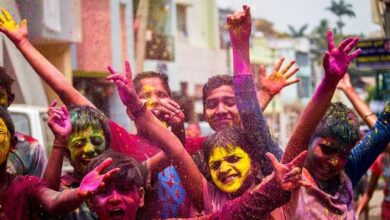To live a healthier life, you must understand the South Korean tradition of meong
Meong serves as a reminder that sometimes the best discoveries come from just pausing and staring. It's a call to reestablish relationships with ourselves, the natural world, and the sheer delight of living in the present.

In a world saturated with constant digital stimuli and incessant notifications, the pursuit of quiet moments for introspection often feels like a rare luxury. In response to this clamor, a simple yet profound Korean wellness practice known as “meong” emerges as a beacon of serenity. Pronounced as “muh-uhng,” meong translates to “to stare blankly” or “to gaze vacantly,” but its significance goes beyond mere mindlessness. This practice encourages intentional immersion in a state of present-moment awareness through focused staring, typically directed at nature.
Picture yourself seated on a rugged cliff, overseeing the boundless expanse of the ocean. As you close your eyes, instead of plunging into darkness, a vibrant kaleidoscope of colors dances behind your eyelids. Upon opening your eyes, your gaze fixates on the rhythmic dance of the waves, the salty breeze carrying away the burdens of your thoughts. This state of tranquil observation, liberated from mental chatter and judgments, encapsulates the essence of meong.
Dr. Rituparna Ghosh, a consultant senior clinical psychologist at Apollo Hospitals, Navi Mumbai, elucidates that “meong” functions as a suffix in the Korean language, denoting the act of “staring into stillness.” She describes it as engaging in activities such as ‘bull meong’—staring into a fire—or fixating one’s gaze on nature, like trees or water, as a rejuvenating practice. This mindful zoning out bears resemblance to Indian meditation and yoga, both of which aim to foster calmness and an acute awareness of the present moment. Drawing parallels, Dr. Ghosh mentions the yogic meditation technique of ‘trataka,’ a Sanskrit term meaning “to look” or “to gaze,” involving a singular focus on an object such as a candle flame.
In the hustle and bustle of contemporary life, meong emerges as a deliberate retreat from the constant buzz of screens. It invites individuals to find solace in quiet contemplation, mirroring the principles of meditation and yoga that transcend cultural boundaries. As we navigate the challenges of the digital age, the practice of meong stands as a reminder to intentionally seek moments of stillness and connection with the natural world, fostering a holistic approach to well-being.
Why can some people find practicing meong difficult?
Our senses and minds are constantly being stimulated in the world we live in. This is the reason why some people find it challenging to sit quietly by themselves in a room.
“Our fast-paced, technology-driven lifestyle is the cause of a constant need for stimulation, discomfort with introspection, or an underlying feeling of anxiety,” Dr. Ghosh stated.
What is its benefits?
Meong, yoga, and meditation teach our minds to be at ease with stillness, which facilitates reflection and increases self-awareness. Dr. Ghosh added that the exercise can also build mental resilience and with time can help in reaching better emotional balance and a deeper sense of serenity. Stress is also lessened, and one also feels fresh and renewed with enhanced focus.
How can you practice meong?
Locate a peaceful setting: Pick a location that is quiet and has few interruptions, like a park, your lawn, or even your living room.
Pay attention to your senses: Without passing judgement, take in the sights, sounds, scents, and sensations that around you. Focus on your breathing and your body’s sensations.
Let go of expectations: Don’t push yourself to see a certain way or feel a particular way. Just give yourself permission to be in the now.
Start modest: Start off with little meong sessions, like five to ten minutes, then progressively extend it as you get more at ease.
Meong can be a remarkably transforming experience, despite its seemingly inert nature. You might get enthralled with the sun’s dance on leaves, lost in the complex patterns of a spiderweb, or struck dumb by the universe’s immensity.




